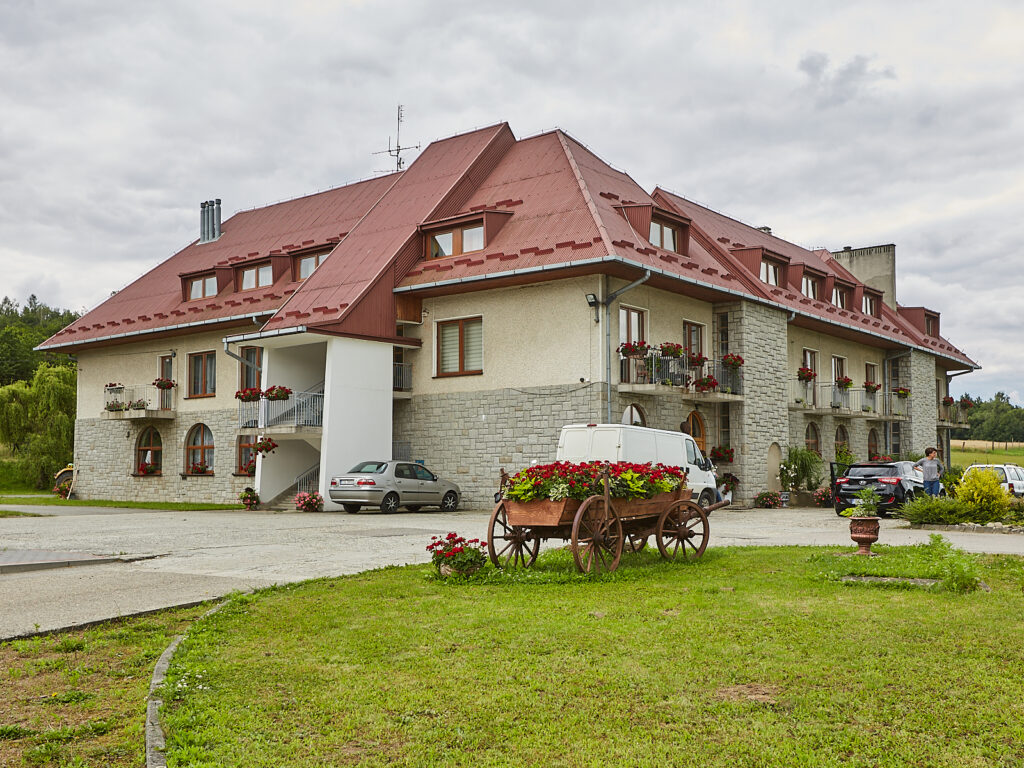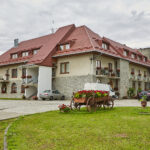Błonie and the Seminary center and its history, including Bl. Sitko
Błonie 80, 33-113 Błonie
The building in Błonie was purchased by the Higher Theological Seminary in Tarnów in 1904 as a place for rest for seminarians. Initially, the buildings were not in the best condition there, but the beautiful location on the Dunajec River meant that Father S. Dutkiewicz purchased this property and slowly moved the necessary adaptations First of all, he built the villa Ave, which still exists today, and there was a large fruit garden next to the villa and a farm, which was the material base of the plant.
Fr. Roman Sitko, taking over the duties of the rector in 1936, supervised the Seminary and ran it well, introducing more initiative and freedom, took care of the remote meals and the development of the library. Unfortunately, the activity of the Seminary was brutally interrupted by the war, when the German occupier took over the building and created a military hospital there. Despite these conditions, there was still teaching in the underground. On May 22, 1941 in Błonie, the Gestapo arrested Fr. Sitko and a few months later he was thrown into the German concentration camp Auschwitz-Birkenau, where in October 1942 he was murdered. Fr. Roman Sitko was beatified in 1999 by Pope John Paul II. “
Click to listen highlighted text! The building in Błonie was purchased by the Higher Theological Seminary in Tarnów in 1904 as a place for rest for seminarians. Initially, the buildings were not in the best condition there, but the beautiful location on the Dunajec River meant that Father S. Dutkiewicz purchased this property and slowly moved the necessary adaptations First of all, he built the villa Ave, which still exists today, and there was a large fruit garden next to the villa and a farm, which was the material base of the plant. Fr. Roman Sitko, taking over the duties of the rector in 1936, supervised the Seminary and ran it well, introducing more initiative and freedom, took care of the remote meals and the development of the library. Unfortunately, the activity of the Seminary was brutally interrupted by the war, when the German occupier took over the building and created a military hospital there. Despite these conditions, there was still teaching in the underground. On May 22, 1941 in Błonie, the Gestapo arrested Fr. Sitko and a few months later he was thrown into the German concentration camp Auschwitz-Birkenau, where in October 1942 he was murdered. Fr. Roman Sitko was beatified in 1999 by Pope John Paul II. “The building in Błonie was purchased by the Higher Theological Seminary in Tarnów in 1904 as a place for rest for seminarians. Initially, the buildings were not in the best condition there, but the beautiful location on the Dunajec River meant that Father S. Dutkiewicz purchased this property and slowly moved the necessary adaptations First of all, he built the villa Ave, which still exists today, and there was a large fruit garden next to the villa and a farm, which was the material base of the plant.
Fr. Roman Sitko, taking over the duties of the rector in 1936, supervised the Seminary and ran it well, introducing more initiative and freedom, took care of the remote meals and the development of the library. Unfortunately, the activity of the Seminary was brutally interrupted by the war, when the German occupier took over the building and created a military hospital there. Despite these conditions, there was still teaching in the underground. On May 22, 1941 in Błonie, the Gestapo arrested Fr. Sitko and a few months later he was thrown into the German concentration camp Auschwitz-Birkenau, where in October 1942 he was murdered. Fr. Roman Sitko was beatified in 1999 by Pope John Paul II. “



